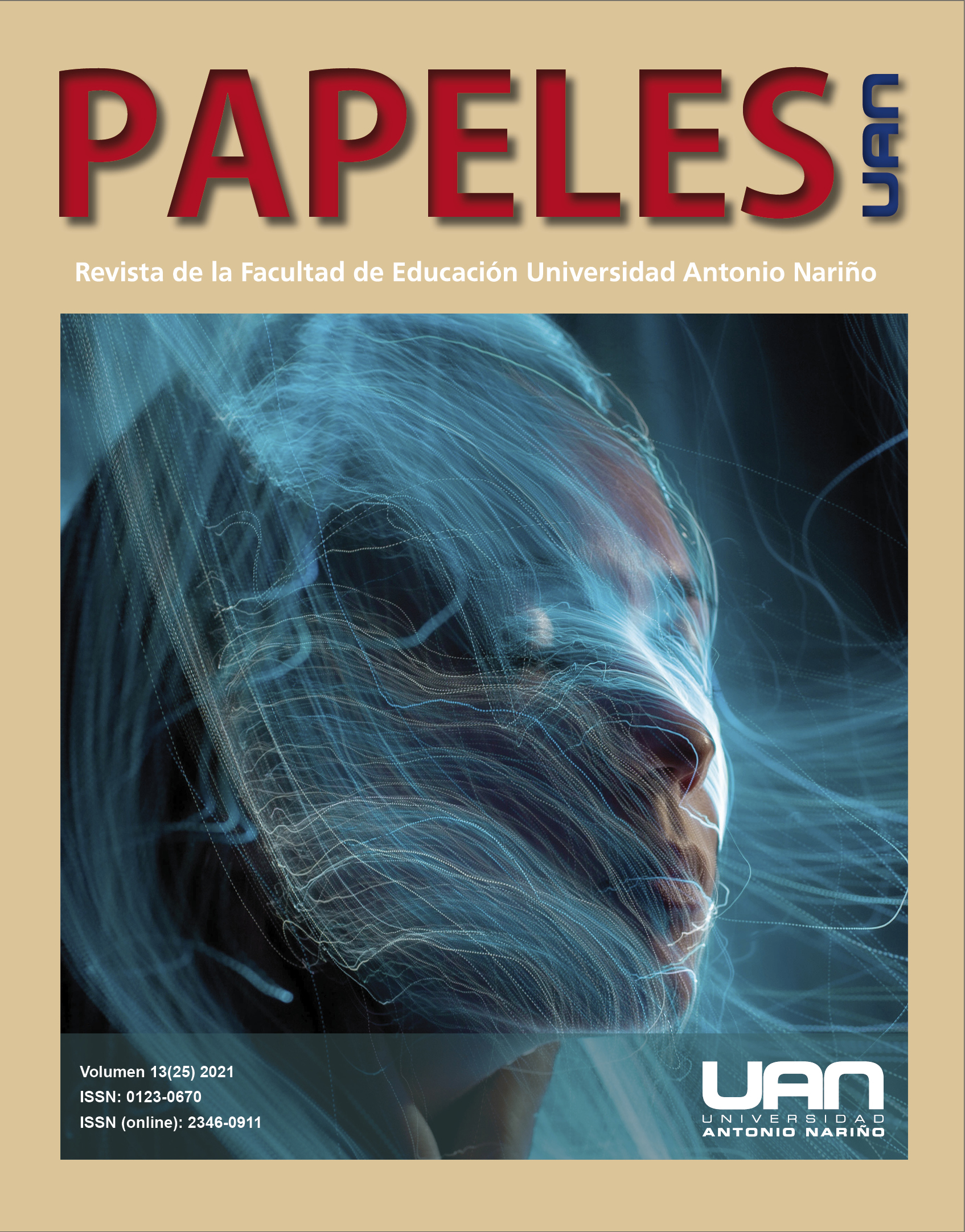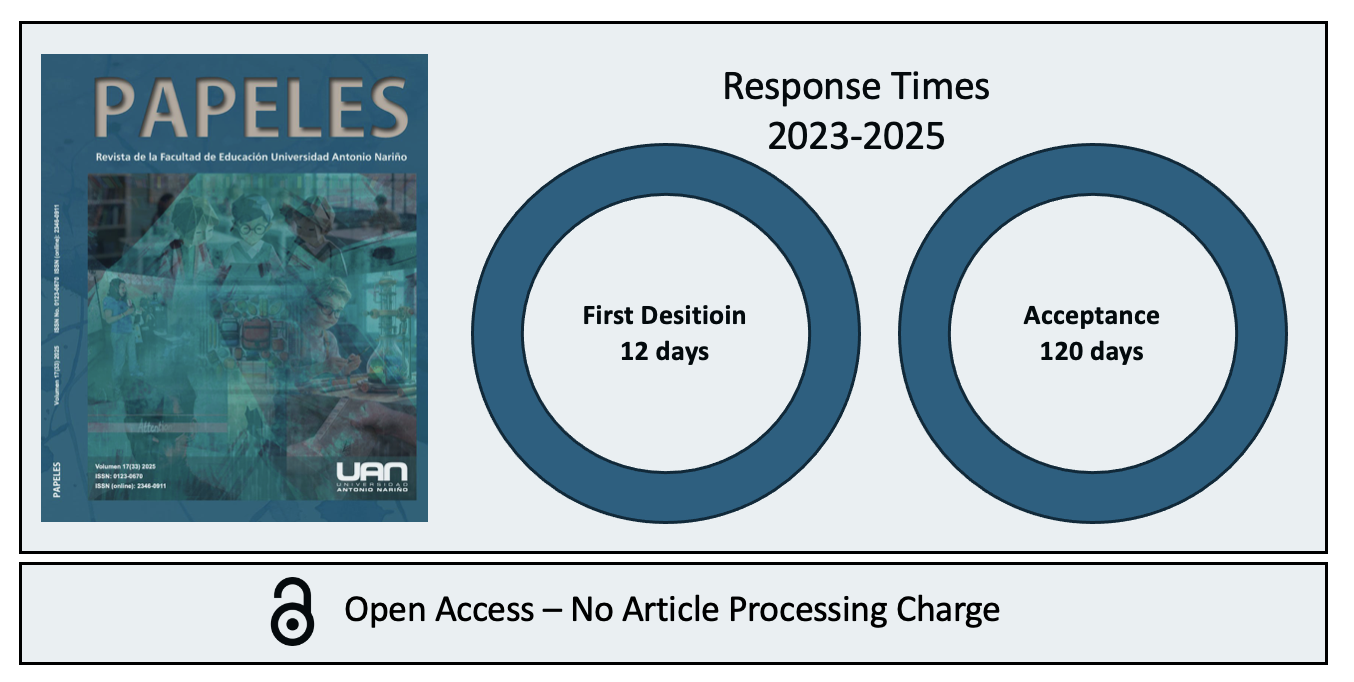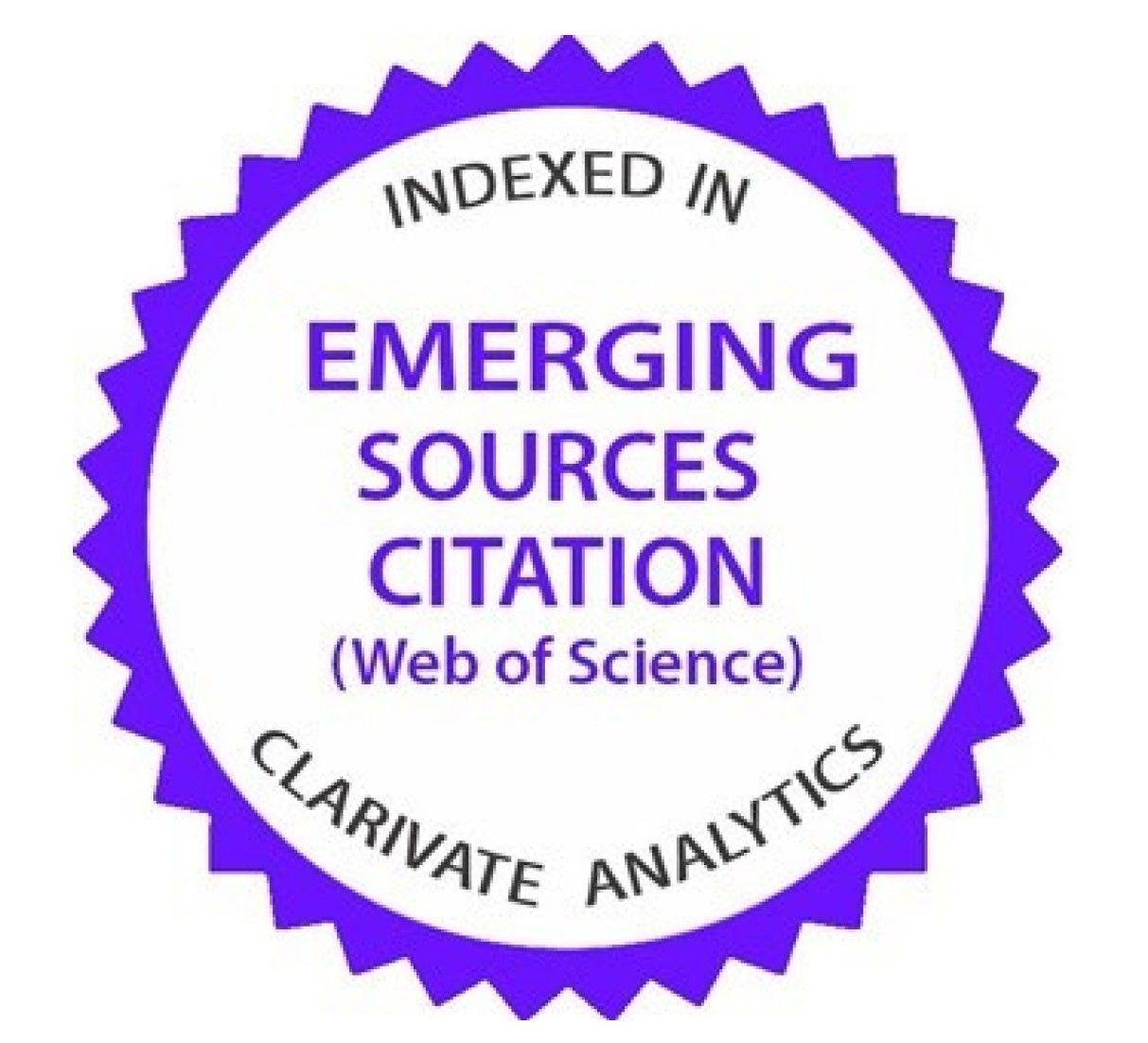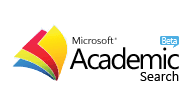Enhancing productive skills in EFL with CIRIPI: a didactic sequence established within the flipped classroom Approach
Fortaleciendo las habilidades productivas con CIRIPI: una secuencia didáctica establecida dentro del enfoque de aula invertida
DOI:
https://doi.org/10.54104/papeles.v13n25.868Keywords:
teaching methods, skills, forigner languageAbstract
This paper reports a case study about a teaching and learning strategy in English Foreign Language (EFL) with 42 university students of the level A2. It was aimed to determine the effectiveness of a didactic sequence that integrated one element of digital technology (website) with one of analog technology (learning journal) within the Flipped Classroom Approach. The data were collected by using the learning journal, two focus groups, and a pretest and a posttest. The results showed that, although productive skills (speaking and writing) are the most difficult to develop in large groups of learners, these can be enhanced when there is a dynamic sequencing of the different class elements.
Downloads
References
References
Aguillon-Lombana, A. (2017). Materiales que generan consciencia intercultural en el aula de ELE. En Melba Libia Cárdenas y Nora M. Basurto Santos (Ed.), Investigación en Lenguas Extranjeras y Lingüística Aplicada (pp. 271-279). Universidad Nacional de Colombia.
Bachman, L. (1990). Fundamental considerations in language testing. Oxford: Oxford University Press. ISBN 0-19-437003-8
Benesch, S. (2001). Critical English for Academic Purposes: theory, politics, and practice. Mahwah, NJ: Lawrence Erlbaum.
Bergmann, J., & Sams, A. (2012). Flip your Classroom: Reach Every Student in Every Class Every Day Washington DC: International Society for Technology in Education. (pp. 120-190).
Boonkit. (2010). Enhancing the development of speaking skills for non-native Speakers of English, Procedia Social and Behavioral Sciences 2:1305–1309.
Brown, D. (2000). Principles of language learning and teaching (4th Ed.). New York: Longman.
Cassany, D. (2006). Tras las líneas: sobre la lectura contemporánea. Anagrama. Barcelona
Cloninger, E. (2009). Resources for Writers with Readings. Pearson Education (3rd Edition).
Council of Europe (2001). The Common European Framework of Reference for Languages: Learning, Teaching, Assessment. Cambridge University Press.
Dakin, J. (1980). Stages of teaching and learning. In D. Byrne, English teaching perspectives (pp. 67-70). London, UK: Longman
Demirel, E. (2016). Basics and Key Principles of Flipped Learning: Classes Upside Down. International Journal of Languages, Literature and Linguistics, Vol. 2, No. 3.
Doff, A. (1988). Teach English: A training course for teachers. Cambridge, UK: Cambridge University Press
Ellis, R. (2003). Task-based language learning and teaching. Oxford University Press.
Entwistle, N. J. & Smith, C. A. (2000). Target understanding and personal understanding: a question of match (under review).
Escudero, G.; Cutiopala, D.; Caisaguano, J.; Gallegos, L. (2020). A comprehensible overview of EFL students’ drawbacks to produce oral communication. Revista Espacios Vol. 41 (Issue 18). Retrieved form: https://www.semanticscholar.org/paper/A-comprehensible-overview-of-EFL-students-drawbacks.
Gautam, P. (2019). Integrated and Segregated Teaching of Language Skills: An Exploration. Journal of NELTA Gandaki. 1. 100-107. 10.3126/jong. v1i0.24464.
Gower, R., Phillips, D., & Walters, S. (1995). Teaching practice handbook (2nd ed.). Oxford, UK:Macmillan Heinemann
Halliday, M.A.K. (1985) Introduction to Functional Grammar. (2nd edition, 1994) London:Edward Arnold.
Harmer, J. (2007). The practice of English language teaching (4th ed). Harlow, England: Pearson Education.
Hlosková, M. (2013). Sitcoms as a Tool for English Language Teaching. Brno University.
Jaramillo and Medina. (2011). Adolescents’ Awareness of Environmental Care: Experiences when Writing Short Descriptive Texts in English. PROFILE Vol. 13, No. 1, April 2011. ISSN 1657-0790. Bogotá, Colombia. Pages 11-30
Kumaravadivelu (2003) Beyond the Methods: Macro strategies for Language teaching. Yale University Press. New Haven and London.
Kumaravadivelu, B. (1994). The post-method condition: (E) merging strategies for second /foreign language teaching. TESOL Quarterly, 28(1), 27-48.
Kumaravadivelu, B. (2006). Understanding Language Teaching. New Jersey.Lawrence Erlbaum.
Kumaravadivelu, B. (2012): Language teacher Education for a Global Society: A Modular Model for Knowing, Analyzing, Recognizing, Doing and Seeing. New York.Routledge.
Lewis, M., & Hill, J. (1993). Source book for teaching English as a foreign language. Oxford, UK: Macmillan Heinemann
Mackenzie, I. (2010). English for Business Studies. A Course for Business Studies and Economics Students. Cambridge: Cambridge University Press, 3rd Edition.
Nunan, D. (1991). Language teaching methodology: A textbook for teachers. Englewood Cliffs, NJ: Prentice Hall.
Pennycook, A. (2001). Critical Applied Linguistics: A Critical Introduction. Lawrence Erlbaum, Mahwah, NJ.
Ortíz, E. (2015). Academic writing in the university context. Revista del Instituto de Estudios en Educación Universidad del Norte nº 22 enero-junio, 2015 ISSN 2145-9444 (electrónica).
Pretorius, S. & Swanepoel, A. (2003). The Learning Organization. In South African Journal of Information management. Retrieved from: https://www.researchgate.net/publication/267244568
Phipps, A (2010). Ethnographers as language learners: from oblivion and towards an echo. In Collins & Gallinat (ed), The Ethnographic Self as resource (pp. 97-110). British Library.
Rico, C. (2011). Principled Language Materials for the Development of Intercultural Communicative Competence. PhD Research Thesis, Leeds, UK: Leeds Met University.
Richards, J. (2015). The Changing Face of Language Learning: Learning Beyond the Classroom. Retrieved from: https://www.professorjackrichards.com/wp-content/uploads
Riddell, D. (2001). Teach yourself. Teaching English as a foreign language. London: Hodder Headline Ltd.
Ruffinelli, A., Valdebenito, M. J., Rojas, M. T., Sepúlveda, L., Falabella, A., Cisternas, T.,Echeverría,
P., and Ermter, K. (2012). Procesos de enseñanza-aprendizaje desde la perspectiva de los profesores en Chile. Santiago: Universidad Alberto Hurtado/Unesco/Mineduc.
Sambandamurthi, A. & Balakrishnan, M. (2015). Experiences and Challenges of using Flipped Classroom by Postgraduate Students: A Preliminary Comparative Study between India and Malaysia. Asian Journal of Humanities and Social Studies (ISSN: 2321 – 2799) Volume 03 – Issue 05.
Sherman, J. (2003) Using Authentic Video in the Language Classroom. Cambridge University Press. Society for Technology in Education
Subramanian, S. Muniandy, B. (2016). Concept and Characteristics of Flipped Classroom International Journal of Emerging Trends in Science and Technology Impact. Retrieved from: https://www.researchgate.net/publication/308977502
Susikaran, R. (2012). The Role of a Teacher in Improving Speaking Skills through Classroom Activities. Retrieved from: www.oiirj.org/oiirj/novdec2012/22.pdf
Torres, S. (1997). Testing accuracy and fluency in speaking through communicative activities. Retrieved from https://howjournalcolombia.org/index.php/how/article/view/236
Wang, Y., & Qi, G. Y. (2018). Mastery-based language learning outside class: Learning support in flipped classrooms. Language Learning & Technology, 22(2), 50–74.
Zuber-Skerrit, O. 2002. The concept of action learning. Retrieved from: https://www.researchgate.net/publication/242349957_The_concept_of_action_learning
Downloads
Published
-
Abstract758
-
PDF167
-
MP4 (Español)68
How to Cite
Issue
Section
Categories
License
Copyright (c) 2021 Angélica Aguillón-Lombana, David Camargo-Cárdenas

This work is licensed under a Creative Commons Attribution-NonCommercial-ShareAlike 4.0 International License.






